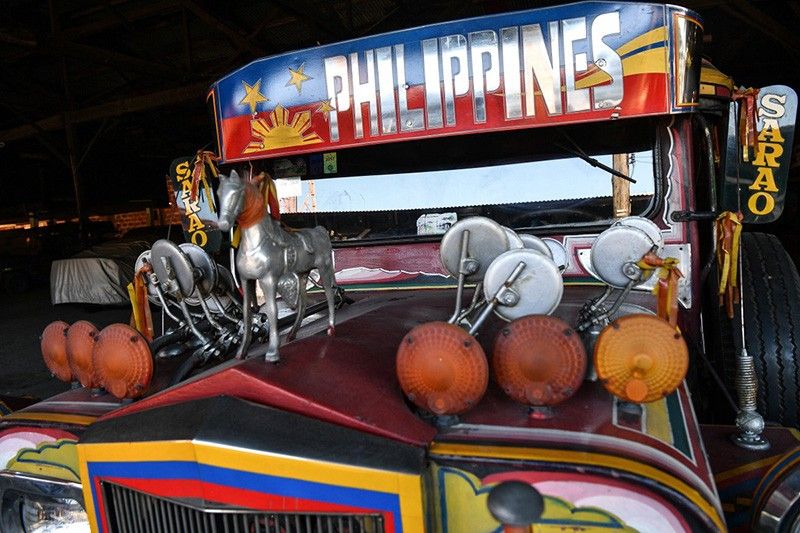Repurposed 'King of the Road': A history of Philippine Jeepney

MANILA, Philippines — Before the mini-buses in plain, solid colors were introduced as public transport as part of the ongoing Jeepney modernization program, it is important to look back at how the Jeepneys of old came to be — as the ingenius innovation made from surplus American military jeeps after World War II.
Many related literature on the history of the Jeepney in the country cited Antonio Lamberto's 1982 piece "Pambihirang Sasakyan, May Lulang Kasaysayan."
The Jeepney's predecessor is considered to be the auto-calesas during the American colonial period in the 1930s. These were cheap, modified imported cars that were used as share taxis.
With these destroyed during the World War II, the need to find for their cheap replacements arose with the idea of repurposing leftover American military jeeps, which were used to transport troops.
The word "Jeepney" is a portmanteau of jeep and the word "jitney," which is also known as dollar van. Dollar vans are modified passenger vans in the United States.
Filipino ingenuity
The new look of the repurposed military jeeps included metal roofs and parallel benches facing each other, with a seating capacity between 14 to 18.
Among the enterprising Filipinos who ventured into making the earliest Jeepneys was Leonardo Sarao, who was a former calesa (horse-drawn carriage) driver-turned-mechanic.
According to the Las Piñas website, Leonardo and his brothers made "Jeepneys, with each section meticulously fashioned by hand, laboriously going over each detail," with a capital of P700 in 1953. Sarao jeeps are clearly distinguished with its trademark: the horse, on which the hood of a Sarao jeep would feature figurines of stallions.
Apart from Sarao, the other known jeepney makers were Francisco Motors and Atendido.
In Fame Pascua's "The Patok Jeep: A Descriptive Study," it is written that another Las Piñas native, Anastacio Francisco, setup a painting shop that later expanded into jeep-building and repair in 1951.
Ignacio Atendido, meanwhile, was the designer of Bagong Lipunan Jeepney that features a side entrance.
Colorful icons on the road
One of the remarkable features of the Filipino Jeepney is its colorful, customized body.
Calyd Cerio wrote in his study "The Motorcycle Taxi Phenomenon in the Philippines: Is the Demise of the Jeepney Possible?" that the Jeepney symbolizes "Filipino ingenuity, innovativeness, adaptability and grit."
Many Jeepneys that are seen plying the major thoroughfares and streets in the country have touches of its owner: they may be painted with images of religious icon, basketball players, Filipino icons, or pop culture figures.
"Every Jeepney was uniquely blended with designs, graphics, and inscriptions. From the skills of craftsman in body-building to the talents of artists in customized painting, the owner as well as the driver purchases or makes ornaments, accessories and hand-paint the inscriptions over the years, hence, the upshot is a highly individualized assemblage," writes Cerio, citing Herminia Q. Menez's 1988 article, "Jeeprox: The Art and Language of Manila's Jeepney Drivers."
Jeepney modernization
The Jeepney, in general, retained its unique yet recognizable form until the Public Utility Vehicle Modernization Program, which now goes by Public Transport Modernization Program (PTMP), by the Department of Transportation, was introduced in 2017.
The aim of the program is to replace jeepneys, buses and other public utility vehicles older than 15 years with "safer, more comfortable and more environment-friendly alternatives by 2020."
Four years since the targeted deadline of the modernization program, many Philippine roads, including those in the National Capital Region, have seen air-conditioned mini-buses alongside the original Jeepneys.
When placed beside each other, their contrast in color and make standout: the air-conditioned mini-bus comes off as a practical and comfortable mode of transport with little to no ornaments and visually appealing art, while the Jeepney calls out attention with its open-air passenger and driver side and its vibrant body painted with designs of its owner's pick.
RELATED: NCCA: Jeepneys to only become museum pieces, unless…





















